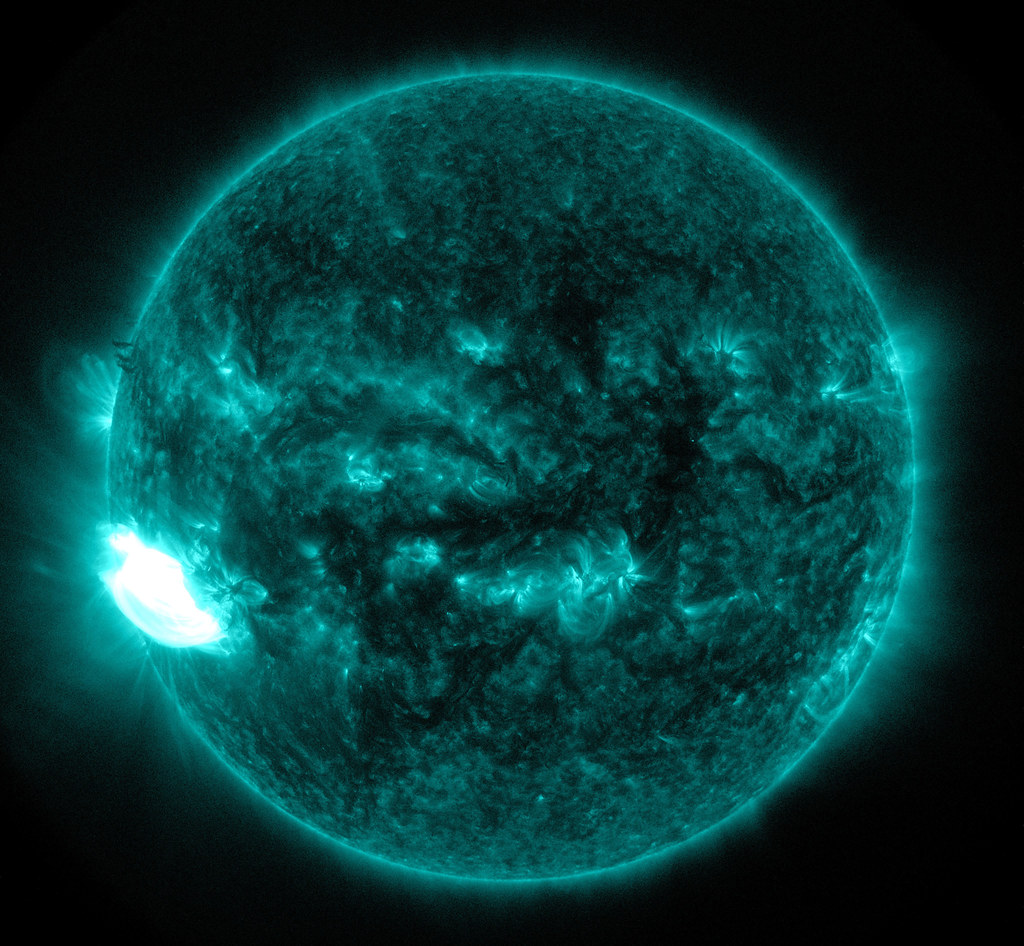

NASA’s Solar Dynamics Observatory captured this image of a solar flare – as seen in the bright flash in the top right portion of the image – on March 30, 2022. NASA observes the sun and our space environment constantly with a fleet of spacecraft that study everything from the sun's activity to the solar atmosphere, and to the particles and magnetic fields in the space surrounding Earth. NASA works as a research arm of the nation's space weather effort. government's official source for space weather forecasts, watches, warnings, and alerts. To see how such space weather may affect Earth, please visit NOAA's Space Weather Prediction Center /, the U.S. ET on July 3, according to the US Space Weather Prediction Center. The solar flare happened at sunspot AR2838 at 10:29 a.m. More info on how flares are classified can be found here. The first large flare of the current solar cycle has erupted from the sun. An X2 is twice as intense as an X1, an X3 is three times as intense, etc.

X-class denotes the most intense flares, while the number provides more information about its strength. This flare is classified as an X-Class flare. Flares and solar eruptions can impact radio communications, electric power grids, navigation signals, and pose risks to spacecraft and astronauts.

RELATED ARTICLE: Solar Storms Mystery Finally Solved: Simulation Model to Predict Space Weather, Geomagnetic Storms DevelopedĬheck out more news and information on Space in Science Times.Solar flares are powerful bursts of energy. NASA and other independent space firms, on the other hand, have yet to utilize the model. After that, they might predict when major solar storms would occur and how likely they are to impact Earth. They claimed that the new model could anticipate the sun's fast revolutions. University of Colorado's Professor Keith Julien and Southwest Research Institute's Dr. Researchers featured the new sun model in a new study titled " Rotation Suppresses Giant-Scale Solar Convection."Īccording to the study lead author, he cooperated with several specialists from other universities. They haven't figured out whether or not solar and geomagnetic storms are predicted. Scientists still haven't figured out what's causing these strange occurrences in space. Sunspots, solar flares, and coronal mass ejections produce streams of high-energy particles from the sun, resulting in solar storms. In a statement, researchers said the sun's intrinsic magnetic field is directly responsible for space weather. NASA and other space organizations would have more time to prepare for powerful solar storms if their new technology proves to be effective. With that, University of Sydney researchers and United States space specialists created a new solar model to forecast space weather. Anti-Solar Storms Sun Plan Could Tell Space Weather and Prevent Potential Global Blackouts They are, nevertheless, stunning each and every time. Yes, it's depressing, but a G1 geomagnetic storm is very regular, occurring more than 150 times per year. Every solar storm bathes the Northern Hemisphere in brilliant light.ĪLSO READ: Solar Storm Heading Towards Earth Likely to Hit Soon How Does It Affect Someone's Health?

UK experts also mentioned that only the CME heading for Earth is predicted to generate a G1 geomagnetic storm, the lowest gravity of a five-level indication.Ĭanada's Northern Lighthouse Project claimed that a CME in a G1 storm might cause modest power grid irregularities, satellite difficulties, and migratory animal disorientation.ĭawn is the most prevalent side effect of CME. Artist's conception of a violent flare erupting from the star Proxima Centauri.


 0 kommentar(er)
0 kommentar(er)
